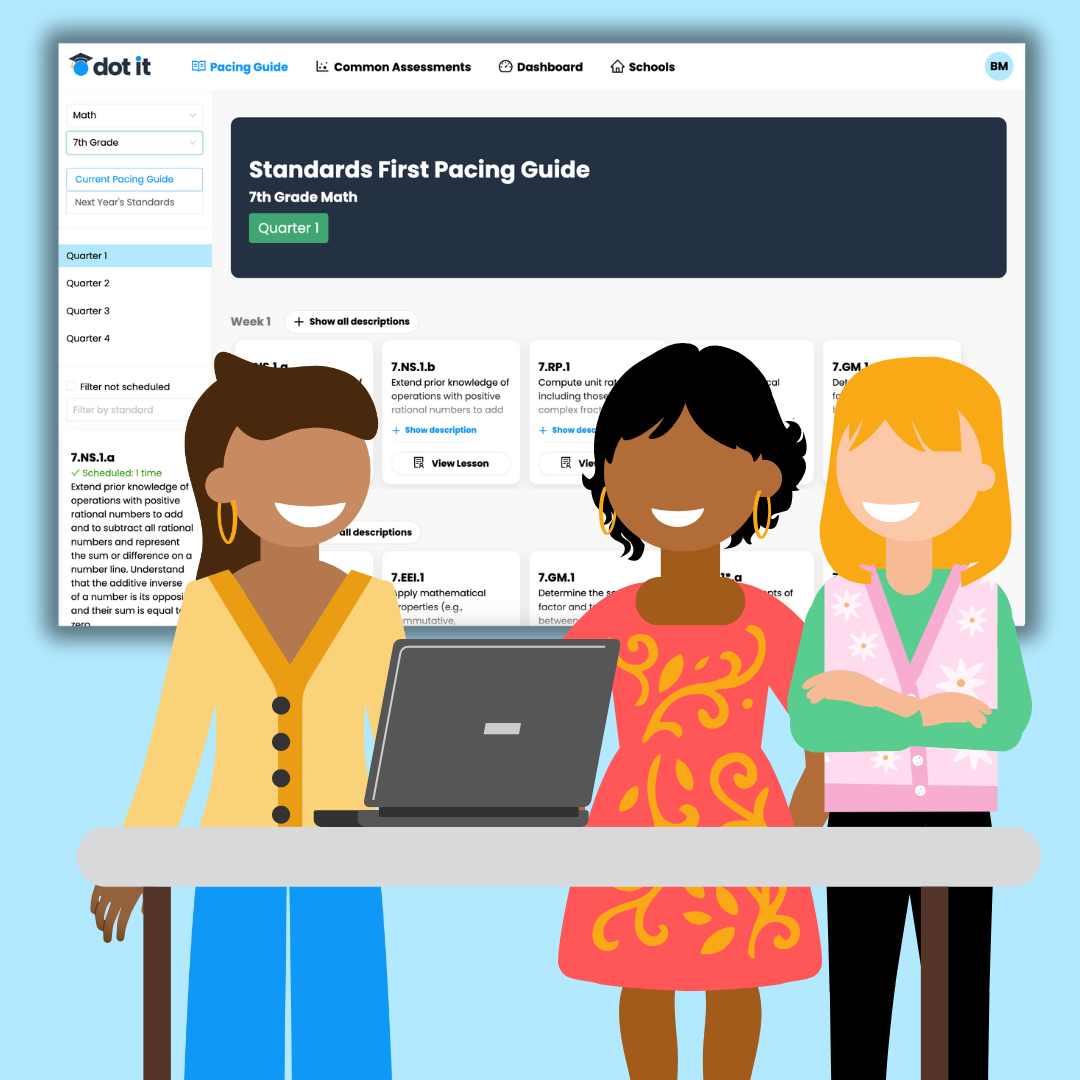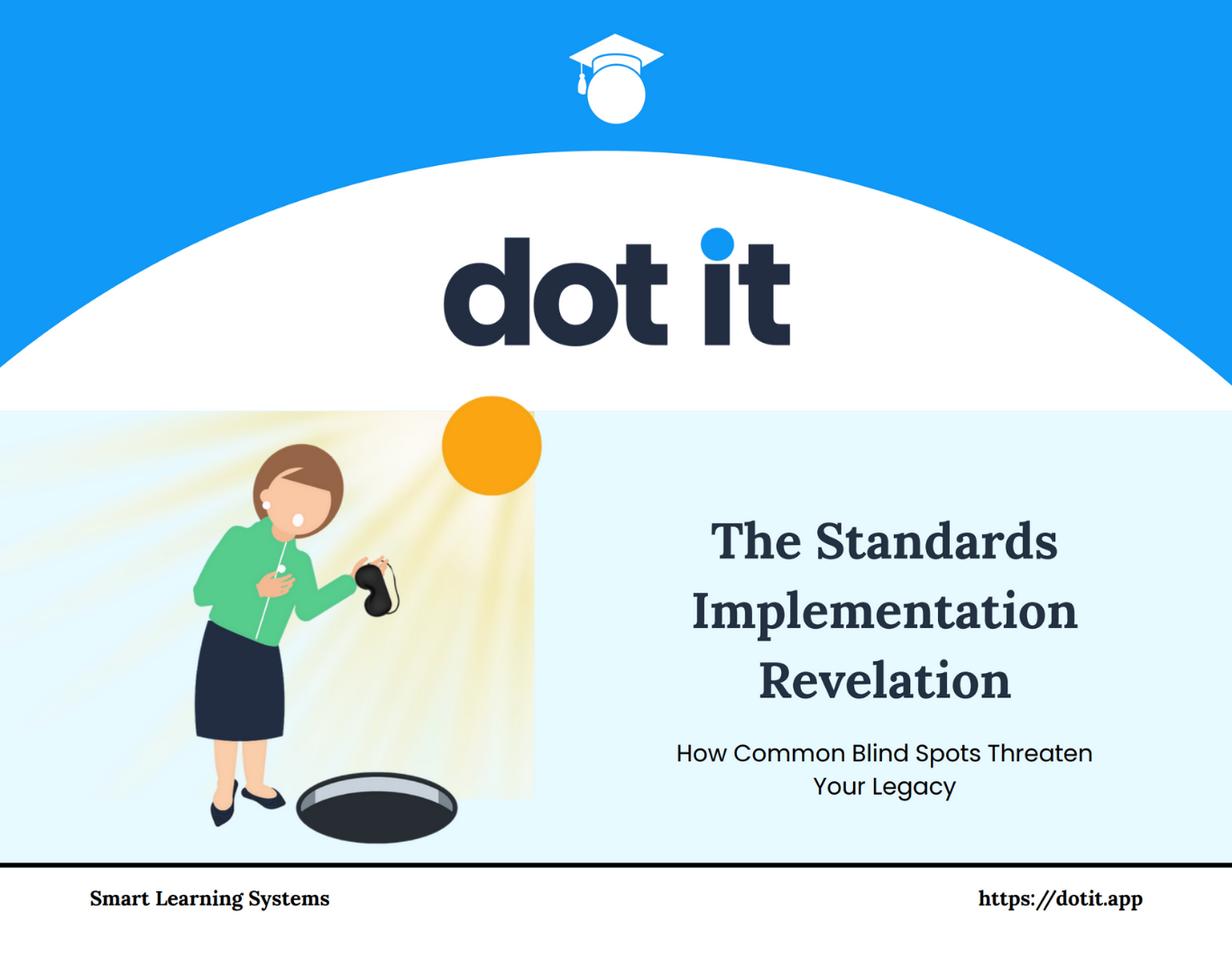The Cost of Confusion: How Standards Misunderstanding Wastes Time & Resources
With education budgets shrinking, can your district afford to waste precious resources on standards confusion?
Monday Morning at Jefferson Elementary
Sarah stared at her computer screen, coffee growing cold. Third period started in 20 minutes, and she still didn’t know what to teach. The math standard said “represent and compute the product of a whole number times a unit fraction,” but what did that actually look like for her struggling math students? Should she use visual models? Word problems? The textbook had 23 different activities.
Down the hall, Mike was creating his own multiplication worksheet from scratch—the fourth one this week. He’d spent his entire Sunday downloading resources, printing materials, and trying to decode what “grade-appropriate rigor” meant.
Meanwhile, Dr. Johnson, the principal, walked past classrooms where the math standard wasn’t being taught at all. Research shows that lessons in most classrooms are well below grade-level expectations about 60 percent of the time. Parent conferences were next week, and she dreaded trying to explain why students weren’t learning what they needed to know.
By 3:30, Sarah had spent another day feeling behind, Mike had added “find better math resources” to his weekend to-do list, and Dr. Johnson was calculating how much of their professional development budget was being wasted on training teachers couldn’t implement.
Sound familiar?
What if Monday mornings looked completely different? What if teachers walked into school knowing exactly what their students needed to learn, how to teach it, and how to know if they’d succeeded?
In tight budget times, this isn’t just a nice-to-have dream—it’s essential survival strategy.
Why Standards Clarity Matters More Than Ever
As districts face unprecedented budget pressures—with federal education funding seeing cuts and uncertain future allocations—every dollar and every minute counts. Yet thousands of teachers still ask the same Monday morning question: “What exactly am I supposed to teach today?”
This confusion isn’t just frustrating—it’s a luxury cash-strapped districts can no longer afford.
The New Reality: Less Money, Same Expectations
The budget landscape has shifted dramatically. Districts across the country are scrambling as federal grant money they budgeted for has been withheld, forcing administrators to reduce staff, delay programs, and cancel services. The current federal budget proposes eliminating nearly four dozen grant programs that provide services for specific K-12 student populations and fund teacher training.
In this environment, districts must maximize efficiency from existing resources—starting with how teachers spend their limited planning time.
Where Standards Confusion Becomes Budget Crisis
Wasted Planning Time = Wasted Salaries
Teachers have only about 45 minutes of planning time per day within their contract hours, with a range from 12 to 80 minutes for elementary teachers and 30 to 96 minutes for secondary teachers. When standards lack clarity, this precious time gets consumed by searching and decoding rather than effective lesson planning.
With teacher salaries representing the largest portion of district budgets, every minute spent confused about standards expectations is money down the drain.
Resource Multiplication Without Purpose
When teachers can’t quickly identify what a standard requires, they create duplicate materials and request additional resources. In a budget-constrained environment, this redundancy becomes financially unsustainable.
Professional Development Without Implementation
Districts are already being forced to cancel teacher professional development events due to funding cuts. The PD that remains must deliver maximum impact—impossible when teachers can’t effectively implement learning due to unclear standards expectations.
The Efficiency Imperative
Districts that prioritize clear standards implementation are better positioned to weather budget cuts because they:
- Reduce planning time waste with standards-first technologies like standards-first pacing guides, lessons, and assignments that eliminate guesswork
- Make textbooks effective again by helping teachers understand standard expectations. People misunderstand that textbooks are simply resources—when teachers don’t understand what the standard requires, textbooks become ineffective. Like any tool, their effectiveness depends on the user’s understanding
- Eliminate resource redundancy by providing one comprehensive system that connects standards, teaching, learning, assessments, and teamwork all in one place instead of managing countless disconnected materials
- Maximize PD impact through ongoing, job-embedded professional development that teaches everyone—including leadership—how to implement standards. Instead of traditional workshops and trainings, PD occurs naturally through everyday interactions designed by leadership
Research consistently shows that well-aligned lesson plans lead to better student learning outcomes—making every invested dollar work harder.
Budget-Smart Standards Clarity Strategy
Step 1: From Content-Based to Standards-Based Pacing Guides
Stop wasting teacher time with content-heavy pacing guides that leave standards interpretation to individual teachers. Provide standards-first pacing guides that clearly identify what students must master and when.
Standards-First Pacing Guide Template:
- Standard: [Clear, unpacked standard statement]
- Student Learning Target: “I can…” statement in student-friendly language
- Success Criteria: Specific, observable evidence of mastery
- Assessment Method: How mastery will be measured
- Standards-First Lesson Plans: Pedagogy needed for students to master each standard, focused on what students actually say and do to demonstrate mastery
This eliminates the Monday morning guesswork and ensures every teacher knows exactly what students need to learn.
Step 2: From Content-Based to Student-Based Planning Time
Teachers shouldn’t spend their precious 45 minutes writing curriculum from scratch. Provide exemplary standards-first lesson plans so planning time focuses on student needs.
What Districts Should Provide:
- Complete, standards-aligned lesson plans for each learning target
- Multiple strategies for different learning styles
- Built-in differentiation options
- Formative assessment checkpoints
What Teachers Should Discuss in Planning:
- “How will my specific students respond to this lesson?”
- “Which students need additional support or challenge?”
- “What scaffolds does this class need?”
This transforms planning from curriculum creation to strategic student-focused instruction.
Step 3: From Content-Based to Standards-Based Assessments
Eliminate teacher time spent creating assessments by providing standards-aligned quizzes and assignments that directly measure learning targets.
Pre-Built Assessment System Should Include:
- Formative assessments for each standard that provide real-time feedback
- Summative assessments that connect directly to the standards-first pacing guide timeline
- Multiple question formats (selected response, constructed response, performance tasks)
- Clear, actionable analytics that show exactly which students need reteaching before it’s too late
Teachers can then focus planning time on responding to data and adjusting their teaching practice rather than creating assessments and wondering what the results mean.
The Bottom Line
With federal funding facing significant cuts and consolidation, districts must eliminate inefficiencies wherever they exist. Standards confusion forces teachers to waste their limited planning time on interpretation rather than instruction—a cost that becomes unsustainable when budgets tighten.
Immediate Action: Conduct a standards clarity audit this week. In a resource-constrained environment, you can’t afford to have teachers spending precious planning time confused about what to teach.
Clear standards aren’t just good pedagogy—they’re essential budget management.
Next month: “Stop the Search: Creating One-Click Access to Standards-Aligned Resources”






